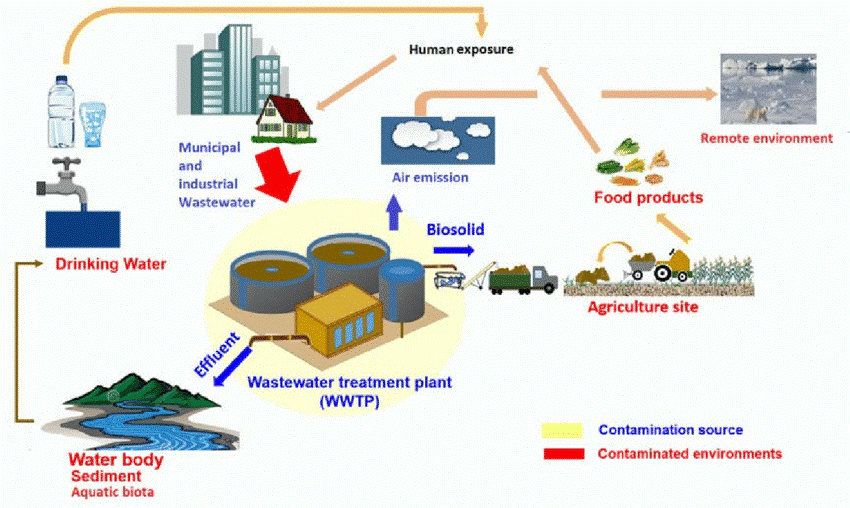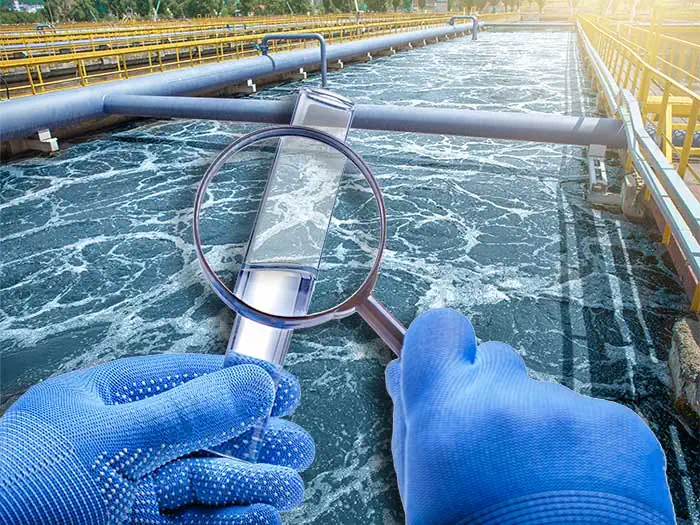Comprehensive PFAS Management Strategies for Contaminated Sites
Comprehensive PFAS Management Strategies for Contaminated Sites
Blog Article
Your Guide to PFAS Therapy Technologies and Conveniences
The frequency of PFAS contamination in water sources necessitates a comprehensive understanding of available therapy innovations. Numerous techniques, such as turned on carbon filtration, ion exchange systems, and progressed oxidation processes, present distinct benefits in resolving these relentless toxins. Each innovation not just targets particular PFAS substances yet additionally plays an important role in improving overall water quality and securing environmental honesty. As communities come to grips with the effects of PFAS exposure, the choice of an appropriate treatment approach becomes significantly vital, triggering a closer assessment of these technologies and their particular advantages.
Comprehending PFAS Contamination
Recognizing PFAS contamination is crucial for addressing its pervasive effect on environmental and human health (m270 pfas treatment). Per- and polyfluoroalkyl materials (PFAS) are a team of artificial chemicals extensively used in different industrial and consumer products because of their water- and grease-resistant residential or commercial properties. Frequently found in firefighting foams, non-stick kitchenware, and water-repellent materials, PFAS have entered the environment through manufacturing procedures, wastewater discharges, and leaching from garbage dumps
When released, these compounds continue in the environment, resulting in widespread contamination of dirt and water resources. Their one-of-a-kind chemical framework, defined by solid carbon-fluorine bonds, provides them immune to deterioration, resulting in a sensation referred to as "for life chemicals." Consequently, PFAS can accumulate in the body and the food cycle, potentially causing damaging wellness impacts, including immune system disturbance, developing issues, and a boosted danger of certain cancers cells.
Governing companies and health companies are progressively recognizing the value of PFAS contamination, triggering initiatives to keep an eye on, evaluate, and minimize its effects. Recognizing the pathways of PFAS contamination is vital for informing public law and developing efficient methods to secure both ecological and human health and wellness.
Review of Treatment Technologies
Numerous treatment innovations have been developed to address the obstacles presented by PFAS contamination in water and dirt. These modern technologies can be broadly classified into numerous categories, each with its distinct systems and effectiveness in removing PFAS compounds.
One famous technique is ion exchange, which makes use of material materials to catch and eliminate PFAS from contaminated water. Another innovation, advanced oxidation procedures (AOPs), utilizes solid oxidants and ultraviolet light to damage down PFAS into much less dangerous compounds.

Activated Carbon Filtering
Triggered carbon purification is a widely utilized method for the removal of PFAS from contaminated water, known for its ability to adsorb a broad variety of organic compounds. This technology employs activated carbon, a highly permeable material with a considerable surface location, which facilitates the binding of PFAS particles via physical adsorption. The performance of turned on carbon in getting rid of PFAS is affected by numerous aspects, including the sort of carbon used, the contact time, and the concentration of PFAS in the water.
Among the advantages of triggered carbon filtration is its flexibility; it can be executed in various arrangements, such as granular activated carbon (GAC) systems or powdered activated carbon (PAC) systems. GAC systems are usually used in larger-scale applications, while special-interest group can be utilized in smaller sized or momentary setups. The technology is reasonably simple to operate and preserve, making More about the author it available for many water therapy centers.

Ion Exchange Systems
Ion exchange systems stand for another efficient method for the elimination of PFAS from polluted water, enhancing techniques like turned on carbon filtering. These systems operate the concept of exchanging ions in the water with ions hung on a resin material. Ion exchange materials can be specifically created to target the negatively billed PFAS compounds, efficiently recording them and enabling cleaner water to travel through.
One of the key advantages of ion exchange systems is their capacity to get rid of a vast array of PFAS, consisting of both long-chain and short-chain variants. This adaptability makes them suitable for different applications, varying from local water treatment to industrial procedures. Additionally, ion exchange systems can usually achieve lower discovery limitations for PFAS contrasted to some other therapy methods, thus improving water top quality.
However, it is necessary to keep track of and take care of the regeneration of ion exchange media, as the performance can decline gradually as a result of saturation. Proper maintenance and substitute of the material are crucial for sustaining the system's efficiency. On the whole, ion exchange systems provide a trustworthy and efficient service for PFAS elimination, adding dramatically to secure alcohol consumption water standards and environmental management.
Advanced Oxidation Processes
Advanced Oxidation Processes (AOPs) make use of effective oxidants to effectively degrade PFAS compounds in contaminated water. These innovative treatment techniques create very responsive varieties, such as hydroxyl radicals, that can damage down complicated PFAS molecules into much less unsafe results. m270 pfas treatment. AOPs typically employ this hyperlink combinations of ultraviolet (UV) light, ozone, hydrogen peroxide, or Fenton's reagent, enhancing the oxidation possibility and boosting degradation effectiveness
The primary advantage of AOPs depends on their capacity to target a wide array of PFAS substances, consisting of both long-chain and short-chain versions. This convenience is necessary, as PFAS contamination usually includes mixes of different compounds with varying chemical frameworks. Additionally, AOPs can be incorporated into existing water treatment systems, making them a functional remedy for lots of communities and industries.
However, the execution of AOPs can be resource-intensive, needing mindful factor to consider of operational prices and power consumption. In addition, while AOPs work in damaging down PFAS, they might not totally eliminate all results, necessitating more therapy steps - m270 pfas treatment. Overall, AOPs represent an encouraging opportunity for dealing with PFAS contamination, adding to cleaner water sources and improved public health and wellness protection

Verdict
By selecting the proper innovation, areas can improve water top quality, secure public health and wellness, and minimize the environmental threats associated with PFAS direct exposure. Proceeded research internet study and execution of these techniques are vital for effective administration of PFAS contamination in influenced areas.
Report this page